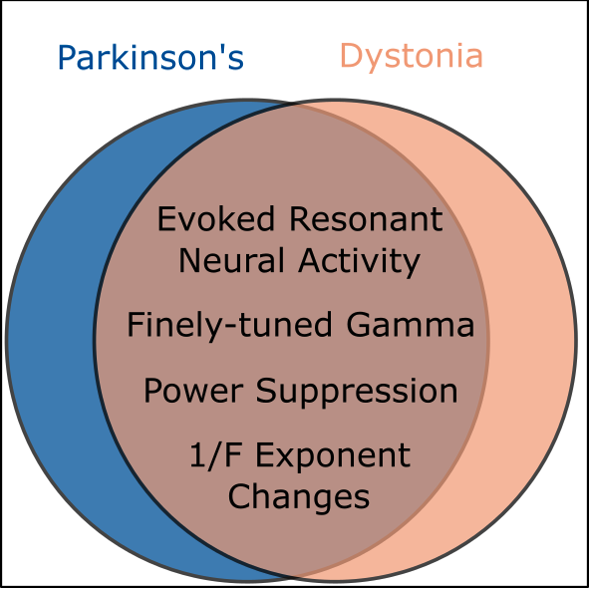Subthalamic Nucleus Stimulation-Induced Local Field Potential Changes in Dystonia.
Deep Brain Stimulation has long been associated with changes in brain activity specific to Parkinson’s. Our research shows that the changes induced by the stimulation are not unique to Parkinson’s, but can also be observed in people with cervical dystonia. This suggests that stimulation effects are not specific to the condition, but rather to the stimulated brain region.
Subthalamic nucleus (STN) stimulation is an effective treatment for Parkinson's disease and induced local field potential (LFP) changes that have been linked with clinical improvement. STN stimulation has also been used in dystonia although the internal globus pallidus is the standard target where theta power has been suggested as a physiomarker for adaptive stimulation.
We aimed to explore if enhanced theta power was also present in STN and if stimulation-induced spectral changes that were previously reported for Parkinson's disease would occur in dystonia.
We recorded LFPs from 7 patients (12 hemispheres) with isolated craniocervical dystonia whose electrodes were placed such that inferior, middle, and superior contacts covered STN, zona incerta, and thalamus.
We did not observe prominent theta power in STN at rest. STN stimulation induced similar spectral changes in dystonia as in Parkinson's disease, such as broadband power suppression, evoked resonant neural activity (ERNA), finely-tuned gamma oscillations, and an increase in aperiodic exponents in STN-LFPs. Both power suppression and ERNA localize to STN. Based on this, single-pulse STN stimulation elicits evoked neural activities with largest amplitudes in STN, which are relayed to the zona incerta and thalamus with changing characteristics as the distance from STN increases.
Our results show that STN stimulation-induced spectral changes are a nondisease-specific response to high-frequency stimulation, which can serve as placement markers for STN. This broadens the scope of STN stimulation and makes it an option for other disorders with excessive oscillatory peaks in STN. © 2022 The Authors. Movement Disorders published by Wiley Periodicals LLC on behalf of International Parkinson and Movement Disorder Society.

2023. Mov Disord, 38(3):423-434.
2021. Neurobiol Dis, 152:105287.
2023. Neurobiol Dis, 178:106019.
2023. eLife, 12:e82467